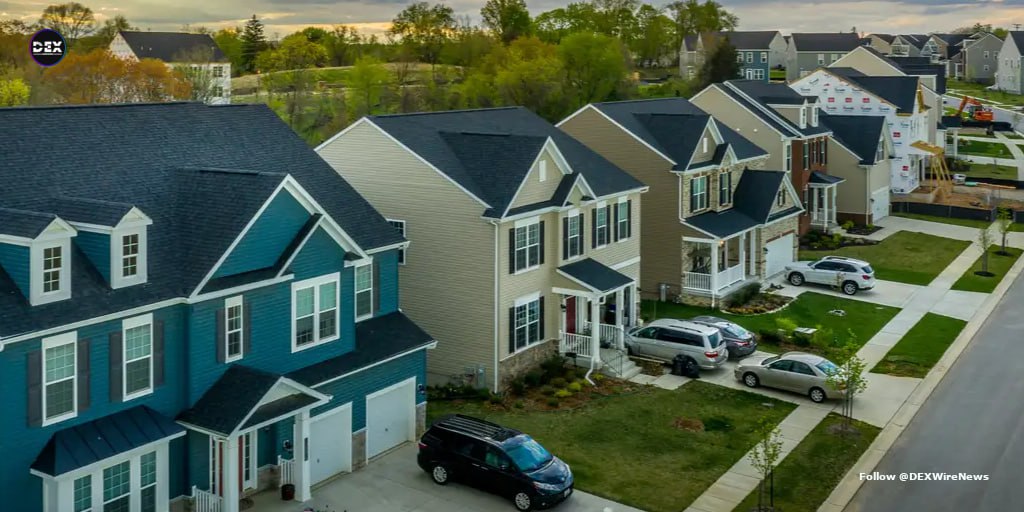In a significant turn of events for the American real estate market, mortgage rates in the United States have plummeted below the pivotal 7% mark for the first time in a month, catalyzing a surge in home purchases nationwide.
According to data released by the Mortgage Bankers Association on Wednesday, March 13 2024, the contract rate on a 30-year fixed mortgage experienced a substantial 18 basis point decline, plummeting to 6.84% in the week ending March 8. This decline represents the most significant drop in nearly three months and has reignited interest among potential homebuyers.
The Mortgage Bankers Association’s index of mortgage applications for home purchases surged by 4.7% to reach a four-week high of 147.7, reflecting the renewed enthusiasm in the housing market following the decline in mortgage rates.
While mortgage rates have descended from their peak in October, when they soared to the highest levels since 2000, they remain significantly higher than those observed in 2021. However, this recent dip below 7% has injected fresh optimism into the housing sector, with experts anticipating a potential influx of buyers drawn by the more favourable borrowing conditions.
Navigating the Specter of 1970s Inflation and Mortgage Rates
Amidst these developments, discussions have arisen regarding the possibility of a resurgence of 1970s-style inflation, which famously led to sky-high mortgage rates in the early 1980s. The recent Consumer Price Index (CPI) report, released on Tuesday, March 12 2024, revealed a 12-month inflation rate of 3.2%, slightly below the running average since 1914.
Some real estate analysts have voiced concerns about a repeat of 1970s inflation, citing it as a factor influencing the Federal Reserve’s cautious approach to rate adjustments. However, analysis suggests that the current economic landscape may not necessarily mirror the conditions that precipitated the high inflation rates of the 1970s.
The core inflation data, which includes indicators such as the CPI, Producer Price Index (PPI), and Personal Consumption Expenditures (PCE), has shown signs of slowing down from the peaks witnessed during the COVID-19 pandemic. Despite initial concerns about runaway inflation, recent figures indicate a moderation in inflationary pressures.
Key indicators such as the core PCE inflation rate, closely monitored by the Federal Reserve, have remained below the levels seen during the 1970s, standing at 2.8% annually. This contrasts starkly with the double-digit inflation rates characteristic of the 1970s era.
The Complex Dynamics of Housing Market Supply
Meanwhile, the real estate market grapples with a nuanced interplay of supply and demand dynamics. Despite the encouraging decline in mortgage rates, the housing inventory has steadily increased over the past two years, currently at 21% higher than the previous year.
Experts attribute this rise in inventory to various factors, including expectations of rate cuts by the Federal Reserve, cooling inflation trends, and evolving job market conditions. However, the persistent shortage of affordable housing remains a challenge, particularly in high-demand metropolitan areas such as New York City.
In New York City, rental prices have exhibited a notable slowdown in growth compared to previous years, with recent figures indicating a 2.4% increase from the previous year. While this deceleration can be partly attributed to an uptick in rental inventory, the fundamental shortage of housing supply continues to exert pressure on the market.
Global Real Estate Trends and Outlook
Looking beyond the United States, global property markets are anticipated to witness modest price increases in the coming years, according to a Reuters poll of housing specialists. Despite the brief correction experienced post-pandemic, most major property markets are expected to maintain upward price trajectories buoyed by tight supply conditions.
However, bridging the gap between the demand for affordable housing and the availability of such properties remains challenging. Analysts foresee this imbalance persisting for the foreseeable future, underscoring the need for long-term strategies to address housing affordability issues.
While the dip in mortgage rates below 7% has sparked optimism in the US housing market, broader challenges related to inflation dynamics and housing supply continue to shape the landscape. Navigating these complexities will require a multifaceted approach that balances short-term market dynamics with long-term sustainability goals.
Click Here for Updates on Mortgage Rates – It’s FREE to Sign Up for Text Message Notifications!
Disclaimer: This website provides information about cryptocurrency and stock market investments. This website does not provide investment advice and should not be used as a replacement for investment advice from a qualified professional. This website is for educational and informational purposes only. The owner of this website is not a registered investment advisor and does not offer investment advice. You, the reader / viewer, bear responsibility for your own investment decisions and should seek the advice of a qualified securities professional before making any investment.




